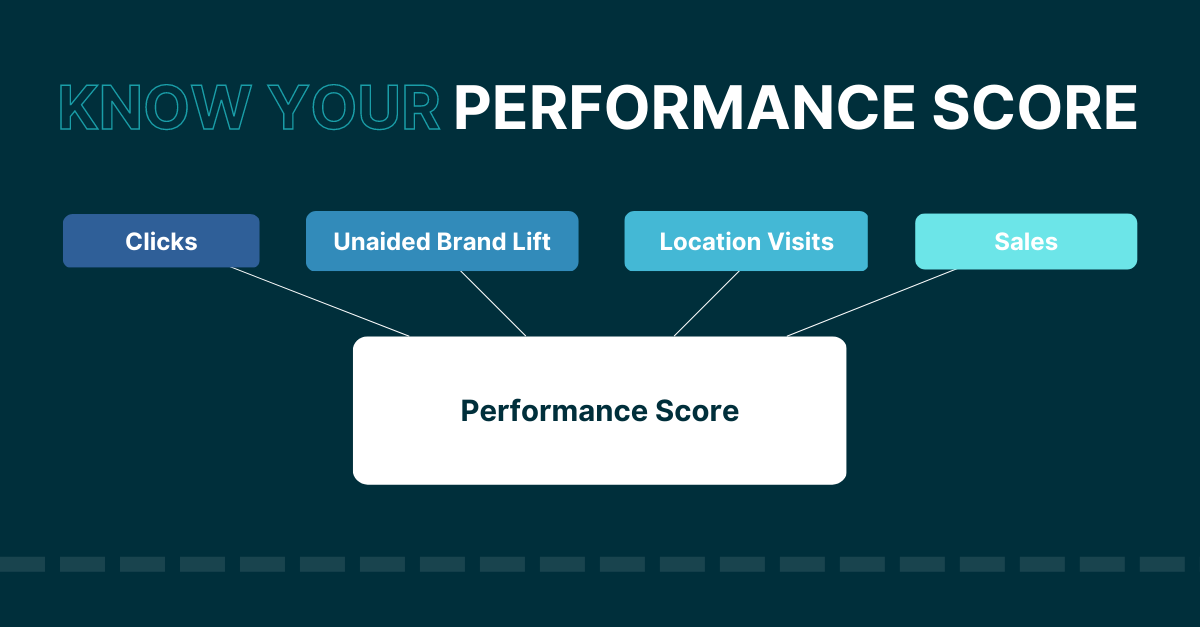A strong marketing measurement strategy is the cornerstone of media planning, answering the complex question: how is advertising supporting business success?
A unified measurement framework guides brands toward achieving full-funnel goals. Sometimes, this is as simple as defining media KPIs and optimization points – think conversions, cost per action, reach and frequency, cost per unique reach, and so on.
But, oftentimes, media metrics alone cannot answer brands’ most critical questions. In these instances, advanced measurement studies and modeling strategies are critical tools to inform smart decision-making.
Upgrading Marketing Data Insights With Advanced Measurement
Advanced measurement strategies don’t just track business success—they explain it. They answer the why before the what or how, providing a source of truth across multiple business disciplines and streamlining communication between stakeholders.
What is advanced marketing measurement?
Advanced measurement refers to methods used to answer advertising questions that are difficult to address by standard media metrics alone. They’re important for understanding campaign performance in a more meaningful way than cost and reach.
Examples of such questions include:
- Did my brand have an increase in unaided brand awareness?
- Did my retail locations gain incremental visits as a result of my marketing campaign?
- Has my brand’s market share increased as a result of the media running?
In these situations, reporting back on simple media metrics won’t offer the depth of business intel you need. As Coegi’s Vice President of Marketing and Innovation, Ryan Green, quotes in Marketing Profs:
“Advanced measurement strategies mute the irrelevant metrics and form connective tissue between the rest so that marketers have a deeper understanding of how various campaign factors can help (or hurt) sales.”
Some metrics simply matter more than others. When you shift toward performance metrics directly relating to your business goals, you’ll gain a clearer line of sight into what is and is not working.
5 Advanced Measurement and Modeling Tactics You Need to Know
Once you identify a need for advanced measurement, it’s time to determine which approach(es) will help fill that knowledge gap. Here are five of the most common advanced measurement methods we use at Coegi:
#1 Brand Lift Study
What are brand lift studies?
Brand lift studies provide mid- or post-campaign consumer readouts to measure brand impact. Set up prior to campaign launch, these studies are ideal for awareness or consideration campaigns looking to track incremental improvements in more elusive KPIs such as brand awareness, ad recall, brand favorability and purchase intent.
Brand lift studies are typically conducted through control vs. exposed consumer surveys that ask questions such as:
- Have you seen an advertisement for {{insert brand here}} in the last 30 days?
- What’s your perception of {{insert brand here}}?
- Would you consider purchasing {{insert brand here}} next time you visit the supermarket?
Depending on the media mix, you can deploy single-channel measurement studies. You’ve likely been served a one question survey before a YouTube video or in your Facebook feed – that is an example of a single-channel brand lift study. Or, you can run cross-channel measurement studies in a demand-side platform environment using display, video, audio, native, and connected TV methods.
These insights are able to be segmented by parameters such as audience, geography, creative, and channel to isolate the top performing elements.
Why use brand lift studies?
Brand lift studies help bridge communication gaps and showcase how various advertising channels work together to meet the primary goal. They can be useful for brands in any industry, especially those lacking broad awareness in cluttered categories.
#2 Foot Traffic Lift Study
What are foot traffic lift studies?
Foot traffic lift studies measure brick and mortar visitation. They connect the dots between awareness and conversion by measuring the lift of in-store foot traffic due to ad exposure. These studies are typically conducted using mobile location data from in-app user opt-in as well as one-to-one impression pixels. Industries that most commonly benefit from foot traffic studies are retail, auto, travel, QSR and CPG.
Why use foot traffic lift studies?
They serve as a valuable sales proxy for brands with brick and mortar locations or whose products are most commonly purchased at physical retail stores. Understanding visitation lift also helps understand consumer consideration, especially for large-scale items like automobiles that often have a longer purchase cycle.
For industries and businesses without branded physical store fronts, creative assets should include retailer logos to direct consumers to distributors that are most convenient to consumers’ locations.
#3 Sales Lift Study
What are sales lift studies?
Sales lift studies are used to measure SKU-level data and tie it back to advertising. They match in-store transactions to digital campaigns including digital, video, native, audio, social, and CTV ads. Oftentimes, these studies use first-party shopper data from retail loyalty programs to tie advertising exposure to in-store purchase behavior. Common sources for this information are retail media networks, IRi, and Catalina.
Why use sales lift studies?
These study results show the increase of in-store purchases due to omnichannel advertising efforts. Sales lift is ideal for CPG brands when incremental product sales and understanding of bottomline company growth is the most critical indicator of success. Attribution of sales is increasingly complicated as products are available in multiple online and offline marketplaces, and advertising is similarly fragmented.
Sales lift helps zoom in on the most important metric, sales volume, without getting lost in the weeds. To see how Coegi used sales lift to prove ROI for a cookie brand, view our case study here.
#4 – Media Mix Modeling
What is media mix modeling?
Media mix modeling (MMM) is an analysis method that helps define optimal media channel budget allocation using historical performance data. Through multi-linear regression models, this method assigns value to each marketing touchpoint, so marketers can determine how each variable impacted key outcomes. It requires at least two years of sales data and media metrics to make accurate predictions and performance optimizations.
“Marketers like specifics, as they help with targeting and attribution, but MMM’s purpose is to help marketers understand how various marketing activities drive the business metrics of a product or service.” – Hugo Loriat
Why use media mix modeling?
Numbers don’t lie, but they don’t tell the whole story either. It is crucial to fully understand the context of the data you’re analyzing. What factors may have contributed to performance fluctuations? Creative? Messaging? Audience strategy? Seasonality?
Media mix models help incorporate all of these variables to determine what story the data is telling. By blending multiple factors, rather than just a singular KPI, you can see a bird’s-eye view of how all the pieces are working together to impact long-term strategy and performance.
Learn more on how to use MMM to boost your bottom line in this video:
#5 – Performance Scoring Model
What is a performance scoring model?
A performance scoring model is a unified marketing measurement model that uses multiple, weighted data sources based on level of significance to define your media’s impact on business goals. It incorporates both media and non-media data to enable smart business decisions and more accurate predictions.
In the end, you come out with a performance score that summarizes how your brand is doing in relation to business goals. Here’s a simplified graphic example of what a performance scoring model can look like:

Performance Scoring Model
Why use a performance scoring model?
No single marketing metric or strategy can equate to business success. Brands need a custom, yet flexible, solution to accurately track and measure marketing results on an ongoing basis. The performance scoring model is a great option for those looking for that flexibility and customization. It is an all-encompassing business dashboard you can use to unify data analytics, clearly qualify marketing’s impact and inform smart decision-making.
Potential Barriers to Entry with Advanced Marketing Measurement
It’s important to weigh the pros and cons before implementing any of these tactics. Consider and discuss these three primary challenges before selecting your advanced measurement plan:
#1 – Cost
- For lift studies, each measurement partner has a unique pricing structure. At times, these can be cost prohibitive for brands just getting started. Consider the available budget and expected outcomes beforehand.
- For advanced modeling, you will likely need to outsource a digital agency, such as Coegi, or a data technology partner to implement these analyses – unless you have an in-house expert with statistics training.
#2 – Data Availability
- For lift studies, some providers require impression volume or retail location minimums to ensure feasibility and statistical significance. It’s also important to identify which channels you want to analyze. Walled gardens (ie. Amazon, Meta) will require different solutions than other programmatic platforms that allow for cross-channel measurement.
- For MMM, you need to already have two or more years of quality marketing and sales data to input. Similarly, the performance scoring model is more flexible, but will be most effective if you have strong consumer data to input from the start.
#3 – Time
- Lift studies tend to take several weeks to launch and gather statistically significant data. It’s important to plan early and set expectations.
Launching Your Brand’s Advanced Marketing Measurement Plan
Once you’ve identified a need for advanced measurement or modeling, it is important to ensure the tactics you chose align with the desired business outcomes.
To help you get started, we took our entire approach to marketing measurement and boiled it down to five simple steps. View our 5 Step Guide to Successful Marketing Measurement here.
Partner With Coegi for Expert Marketing Measurement Strategies
Advanced measurement and modeling will become increasingly important for quantifying marketing success, especially in the cookieless future. But this can be a daunting task for any marketer.
If you are unsure what measurement strategy is best for your brand goals, contact Coegi for a discovery call to get started.






